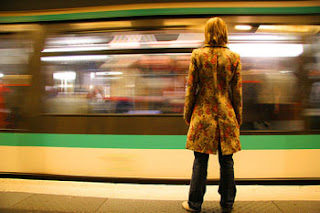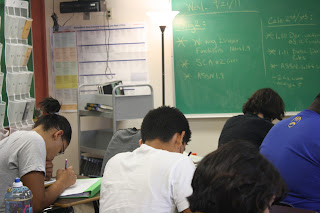Aperture
1. What part of the body should we closely relate aperture?
Focus.
2. Finish this sentence - the smaller the Aperture the larger the F number, the higher the Aperture the smaller the F number.
3. In your own words tell me how aperture impacts Depth of Field?
The depth of field makes the background of the photo sharp.
4. With the camera near you - tell me the F stops available on the lens currently attached.
Shutter Speed
1. If you were assigned to shoot at Blue and Gold night, which will be next month, what shutter speeds do you think you would have to shoot at the following events that night I would like you to answer the question for the following two situations:
At the beginning while the sun is still partially up and the courtyard has reasonable light
a.) the dunking booth-high
b.) the food eating contest-medium
c.) the rock climbing wall-medium
d.) someone working at a booth-low
e.) the DJ/MC working at the middle of the circle-medium
f.) the Diamonds performance-high
f.) the Diamonds performance-high
Towards the end when there is no sun and has gotten dark enough that you can't see from one end of the courtyard to the other.
a.) the dunking booth-high
b.) the food eating contest-medium
c.) the rock climbing wall-medium
d.) someone working at a booth-low
e.) the DJ/MC working at the middle of the circle-medium
f.) the Diamonds performance.-high
2. List the three settings your camera has regarding setting shutter speed (these are found at #5 on the Shutter Speed website. Explain how each works - DO NOT COPY AND PASTE, use your own words.
- Aperture Priority- You set the manual set the lens aperture. While the camera chooses the right speed capture for the photo.
- Manual Mode- Is the control of shutter speed and aperture. At this mode it lets you take full control of the camera and adjust the exposure controls.
- Program Mode- Camera automatically chooses the shutter speed of your photo based on how much light passes thru the lens.
- Shutter Priority Mode- You get to choose the shutter speed, and the camera automatically chooses the right aperture for you based on how much light passes thru the lens.
- ISO- you manually choose what you want it to be.
3. With the camera near you, what are the shutter speeds available to you on that camera? You will have to turn the camera on to determine this - hopefully you can figure out what setting to put the camera on to determine the answer to this question.
ISO
1. What are the advantages of shoot at a higher ISO at a sporting event like basketball or a night football game?
You will get more sound noise in the photo.
2. What suggestions did the author make about using a low ISO?
If the ISO is low then it is less sensitive to the light.
3. What suggestions did the author make about using a high ISO?
When you cant see the light in the photo good enough that's when you should increase the ISO.
4. At the camera near you, please tell me what ISO's are available on your camera?
400; 800;3200;6400;
ISO 6400
ISO 300
SIM CAM




























